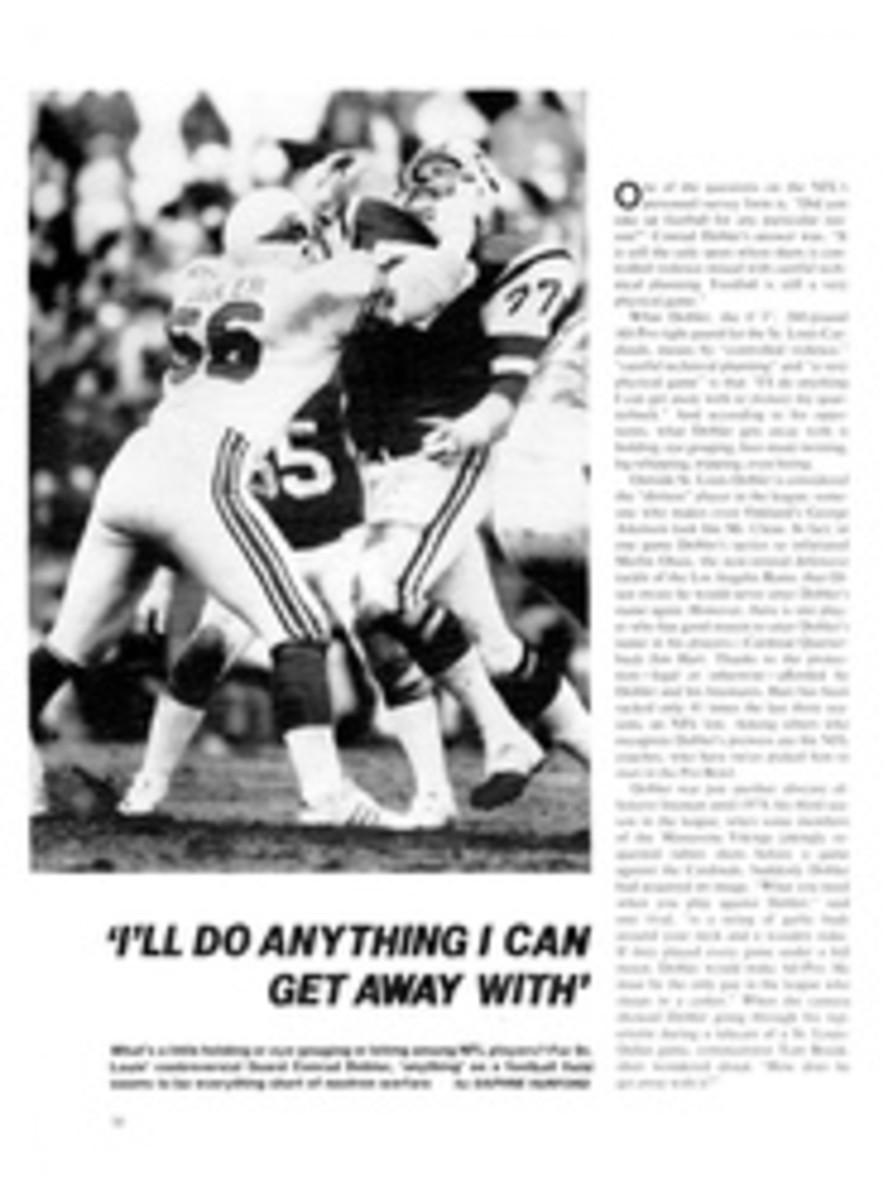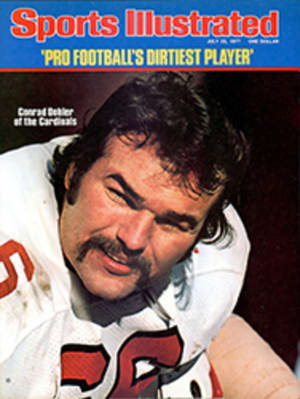
Just an old-fashioned lad
The Soviet Union has produced more than its share of great athletes in recent years, among them Vasily Alexeyev, the weight lifter; Vladislav Tretiak, the hockey goalie; and Valeri Borzov, the sprinter. Now, out of the Ukrainian industrial city of Zaporozhe (pop. 744,000), springs a new hero, 18-year-old Vladimir Yashchenko. When he high-jumped 7'7¾" earlier this month in the U.S.-U.S.S.R. junior track meet in Richmond, Va., breaking Dwight Stones' mark of 7'7½", Yashchenko became the youngest world-record holder in the history of the event. And because he uses the straddle style, which has been eclipsed of late by the Fosbury Flop, he has rekindled the debate over which of those two techniques is better.
What nobody disputes is that Yashchenko enjoys a very bright future. While other high-jump stars have faded fast—a prime example being the University of Wisconsin's Pat Matzdorf, who set a world record in 1971 and disappeared practically the moment he landed in the pit—the 6'3½" Yashchenko is a growing boy who is still honing his technique. His coaches feel he is capable of clearing a stratospheric 7'9" in the not too distant future.
With angelic features, curly blond hair and a fondness for Western-style rock music, Yashchenko gives the impression of being a lighthearted soul. He enjoys tossing Frisbees with friends before workouts and is so amiably disorganized that he is invariably the last one to board buses on trips, prompting teammates to say with a sigh, "O.K., Yashchenko is here—we can go now." With strangers, though, he is shy to the point of being tongue-tied and seems unlikely to allow his sudden fame to distract him. He is serious enough about high jumping that he has been known to sleep with his track shoes beneath his pillow and he admits. "All I think about is clearing that bar."
That kind of dedication is pretty much essential among straddle-style, or sideways, jumpers. Until the late 1960s, the straddle was the way to high-jump, its foremost practitioner having been Russia's Valeri Brumel, who set his first world record in 1961 at the then unthinkable age of 19 and went on to win the Olympic gold medal in 1964 with a jump of 7'1‚Öû". But four years later. American Dick Fosbury became the Olympic champion using his now familiar backward flop. The technique gained immediate acceptance, not only because of Fosbury's success but because it is easier to master than the straddle. Some coaches, especially those in Eastern Europe, have maintained that the straddle is the better style and point out that it is used by East Germany's Rosemarie Ackermann, who holds the women's record of 6'5¼". But so many of the event's other top performers are now floppers that the matter seemed largely resolved in their favor—until Yashchenko.
In confusing the issue anew, Yashchenko is just doing what came naturally in Zaporozhe, where his father is a retired steelworker and his mother a letter carrier. The young Yashchenko, who is still known by the diminutive Volodya, attended a lot of local track meets as a lad, afterward going onto the field with other youngsters to imitate the athletes. By age 11, Volodya was showing such promise in the high jump that his older brother Anatoli, a factory worker, enrolled him in a sports training center.
Yashchenko resolved to remain a straddler. "My idol, Brumel, used the straddle and I didn't want to switch," he says. His coach at the training center, Vasili Telegin, had no intention of converting him to the newfangled flop. Telegin concedes that the straddle takes years to master but he also says that Yashchenko is a born jumper. "I've never seen a youngster his age with such a perfect straddle technique." Telegin says. "He still jumps the same way he did when he started. The details have been improved but the basics are the same."
To avoid what Telegin calls "oversaturation" with the high jump. Yashchenko was encouraged to play handball, basketball and water polo. He also was trained in the use of autosuggestion. Meanwhile, Vladimir Dyachkov, Brumel's former coach, was called upon to help Yashchenko master the intricacies of high jumping. Dyachkov, a professor in Moscow's Central Sports Institute, has remained a devotee of the straddle style; under his tutelage Yashchenko improved dramatically, clearing 6'8" as a 16-year-old in 1975, then going 7'5" last year.
What Yashchenko did at Richmond was a shock, nevertheless. After winning the event over Thurlis Gibbs of San Jose City College at 7'1", and then jumping 7'5¼" to break his personal record, the bar was raised to 7'7". He cleared that height with a good inch to spare to top the European record by one-half inch, and it was obvious that Stones' mark was in unanticipated jeopardy. When Yashchenko made his 7'7¾" jump, his Russian teammates tossed him into the air three times like a beach ball. The bar was later set at 7'8½", a height never before attempted in competition, and he missed all three tries. Coming as it did after all the celebrating, the first attempt was remarkably close: he went over, only to nick the bar with his trailing leg.
With straddle-style jumpers suddenly in possession of both the men's and women's world records, boosters like Dyachkov feel vindicated. "People looking for quick results select the flop," he says. "I'm not knocking the flop—it is easier, technically—but I believe in the straddle because it's more stable and there is virtually no limit to the amount of technical improvement that's possible."
Among those Americans who agree is Maryland Track Coach Frank Costello. Costello was a straddler during his own days as a star high jumper a decade ago. He still believes it the superior style, but he finds himself forced to coach floppers "because you find very few high school straddle jumpers when you recruit and it's too late to change them. The straddle is almost a lost art in this country. It's a great technique but it has to be taught correctly, the way the Soviets do. Maybe this world record will encourage jumpers to take up the straddle again."
The issue could be further complicated by flopper Stones, who says he wants the world record back—this season. He also hankers for a meeting with Yashchenko. "The Russian broke my record under zero pressure, when nobody was expecting anything from him," says Stones. "He's beaten a height, not a person." A showdown could occur in September at track and field's first World Cup in D√ºsseldorf, West Germany, but the Russians might elect to hold back their young star and instead enter the more experienced Aleksandr Grigoryev. "I have a strong feeling I won't meet the kid this year," says Stones.
For his part, Yashchenko hedges, saying, "I'll probably get to know my rivals better pretty soon." Beyond that, his country's newest sports hero has no definite plans other than to continue his studies at the Soviet Sports Institute in Kiev. And, of course, to keep thinking about clearing that bar.
PHOTO
Yashchenko's comrades kept him up after he topped his personal best by 2¾ inches for the new mark.

